The Great Barrier Reef, an iconic and majestic natural attraction, spans over 2,300 kilometers, showcasing an array of vibrant marine life and stunning underwater vistas. This marvel attracts visitors globally, especially during the peak tourist season from mid-October to May, which aligns with the region’s Stinger Season.
Stinger Season in far north Queensland marks the period when jellyfish populations surge, drawn by the warm, tropical waters of the area. While Australia is often joked about for its myriad of dangerous wildlife, jellyfish stings, although unpleasant and potentially deadly in rare cases, have been relatively infrequent thanks to decades of coexistence and the implementation of protective measures.
These measures include the use of stinger nets and the wearing of protective stinger suits, designed to minimize human-jellyfish encounters. It’s crucial to acknowledge our place within this aquatic ecosystem, respecting and coexisting with the marine life that calls the Great Barrier Reef home. As we navigate the waters of the Great Barrier Reef during Stinger Season, understanding the various jellyfish species and adopting protective measures becomes essential for a safe and enjoyable visit to this unparalleled natural wonder.
Bluebottles
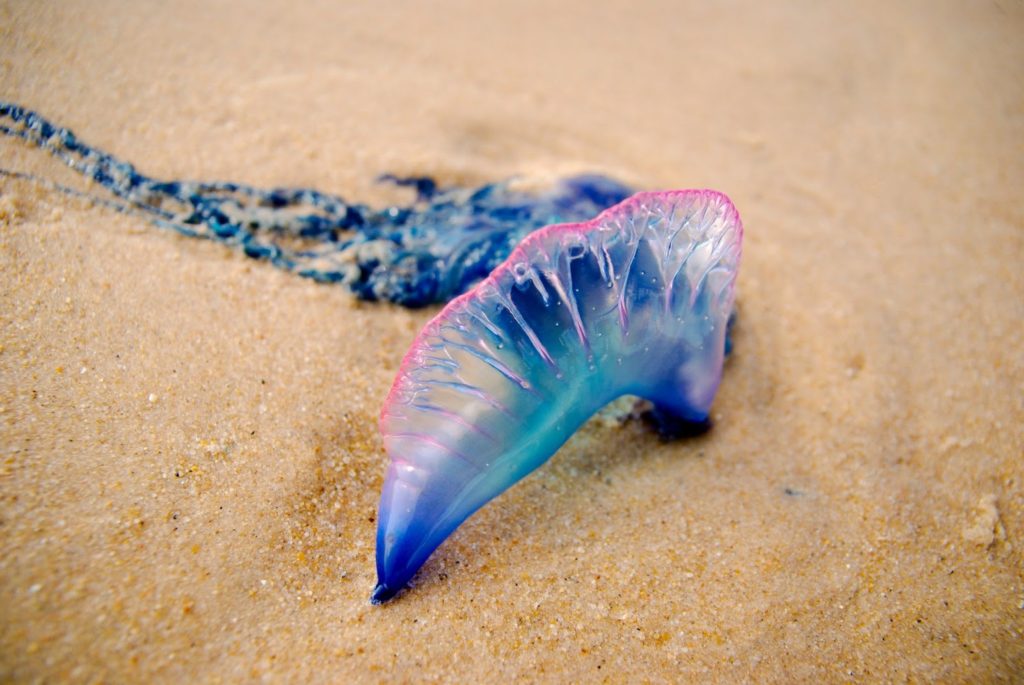
If you’re from Australia, chances are you’re familiar with bluebottles, the country’s most common jellyfish known for its sting. They’re often seen in the ocean or on the shore, delivering a sharp but non-lethal sting that can hurt for up to an hour. If stung, avoid vinegar; instead, wash off any tentacles with sea water and soak the area in hot water to ease the pain.
About two years ago while working, I encountered a bluebottle firsthand. A woman needed help swimming to the reef, and while assisting her, I felt a sudden sting on my forehead, likely from a jellyfish, though I didn’t see it. I brushed off the discomfort to ensure the woman reached the reef safely. Back on the boat I discovered blue tentacles in my hair—a clear sign of a bluebottle sting.
I rinsed the area with hot water and used an ice pack, which helped mitigate the pain more than anything. The sting was more annoying than excruciating, and the swelling subsided by the day’s end. Customers were concerned, but I assured them I was okay.
So, if you ever get stung by a bluebottle, remember, it’s painful but not an emergency. Just take the right steps to alleviate the discomfort.
Irukandji jellyfish
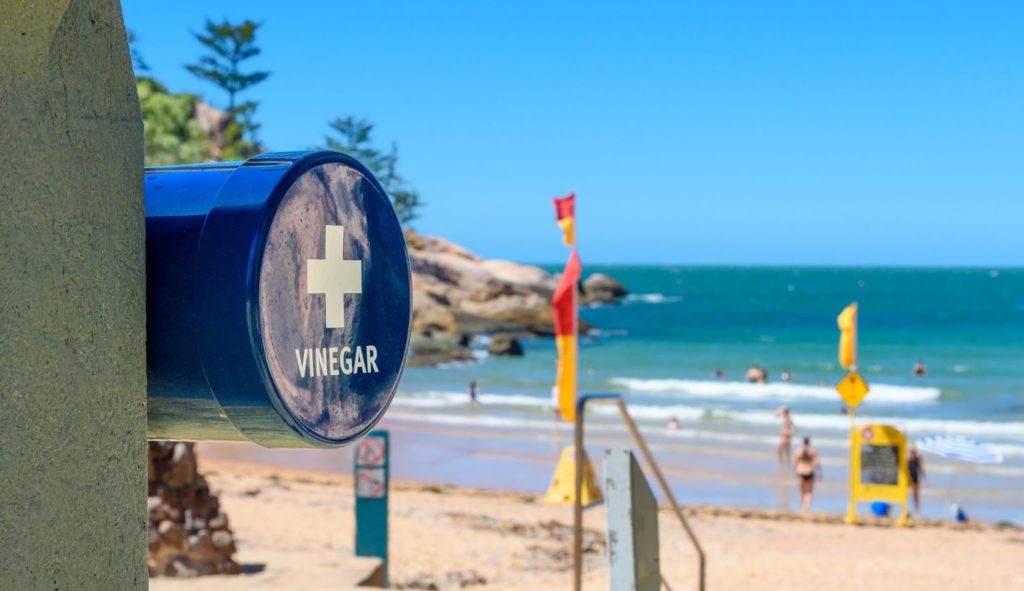
The Irukandji jellyfish, a tiny yet highly venomous box jellyfish species, poses a stealthy danger in the ocean. With a diameter of just two centimeters and tentacles stretching up to a meter, it’s nearly invisible to swimmers in tropical Australian waters, ranging from Bundaberg in Queensland to Geraldton in Western Australia.
Encountering one is something you’d definitely want to avoid! If stung, you could experience Irukandji Syndrome, with symptoms that might not surface until 5 to 45 minutes post-sting. This condition can cause severe back pain, muscle cramps, nausea, vomiting, anxiety, restlessness, and difficulty breathing.
Historically, there have been instances of Irukandji stings at Low Isles between November and May. Should you get stung, tour operators are trained to remove you from the water and apply vinegar to the sting site for at least 30 seconds to neutralize the venom.
If vinegar isn’t on hand, the next best step is to remove any tentacles and rinse the area with seawater. Emergency services will be contacted, and you’ll likely need hospital care due to the intense pain of the sting—certainly not an experience to be envied.
However, the likelihood of such an encounter is slim. With millions visiting the Great Barrier Reef annually, only about 50 to 100 might suffer from Irukandji stings in a particularly bad year.
Box Jellyfish
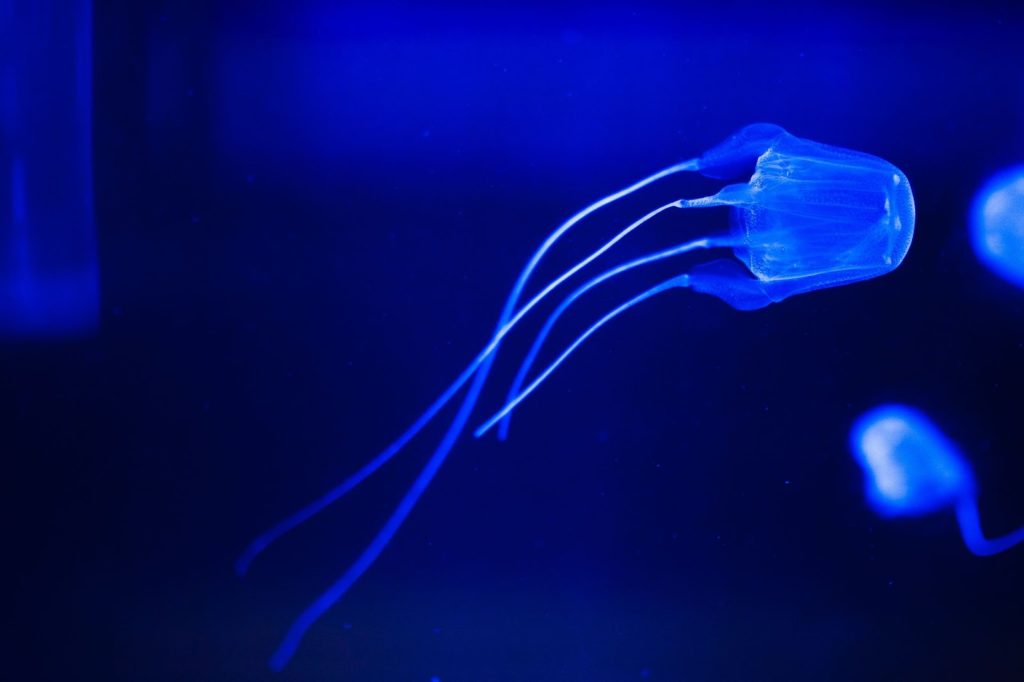
The box jellyfish stands as the world’s most venomous marine creature, with a bell that can span up to a foot in diameter and tentacles stretching up to 10 feet. These creatures are nearly invisible in the water, thanks to their pale blue, transparent appearance, and can sport up to 15 tentacles from each corner of their bell. Armed with around 5,000 stinging cells per tentacle, activated by chemicals found on the skin of their prey, they’re formidable predators.
A sting from a box jellyfish can be catastrophic, potentially leading to paralysis, cardiac arrest, and even death within minutes. Its venom is designed to instantly immobilize fish and shrimp, targeting the heart, nervous system, and skin cells.
For humans, the aftermath of a sting can be dire, with some victims succumbing to shock, drowning, or heart failure before they can make it back to land. Survivors often endure severe scars and pain long after the encounter.
Found mainly in the coastal waters of Northern Australia and the Indo-Pacific, particularly around the Great Barrier Reef, box jellyfish are a rare sight despite their dangers. In my four years working on the Great Barrier Reef, I’ve encountered them only a few times.
Should you be stung, immediate medical treatment is essential, and tour operators are well-prepared to respond quickly. Moreover, we implement preventative strategies to minimize jellyfish sting risks.
To protect yourself from jellyfish stings, there are several straightforward precautions you can take.
1. Wear a stinger suit
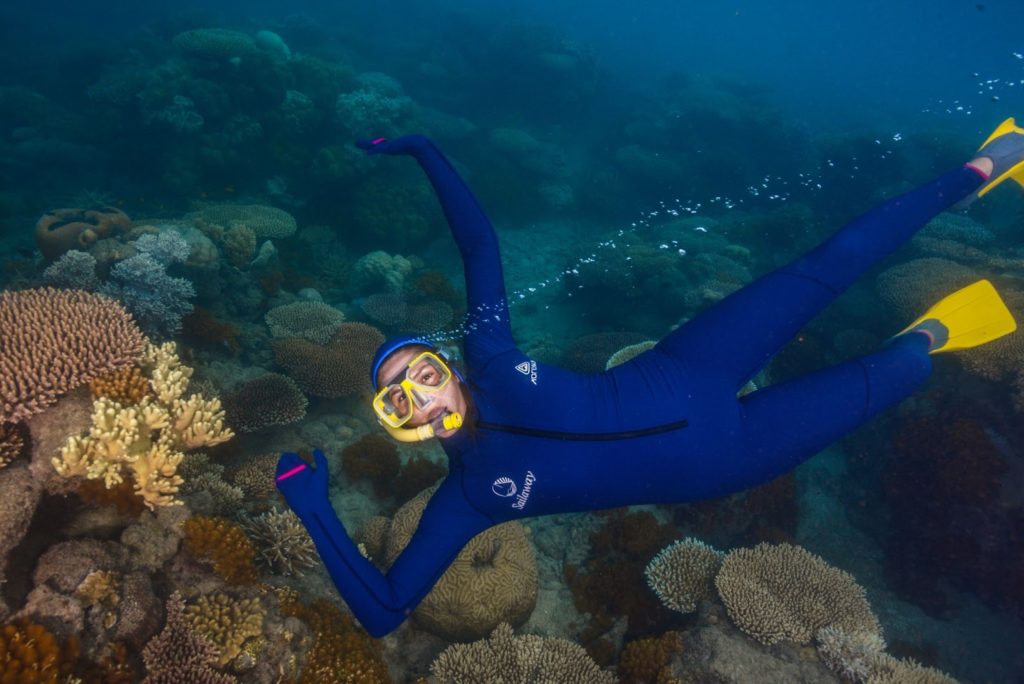
Stinger suits were created to shield swimmers from the stings of jellyfish, allowing them to enjoy Australia’s warm waters and the reef during jellyfish season, or what we Aussies call summer. These full-body suits are designed to provide comprehensive protection against jellyfish stings, offering a lighter alternative to traditional wetsuits.
Their fabric is specially treated to prevent jellyfish tentacles from adhering, instead allowing them to slide off. This means that when jellyfish come into contact with the suit, they don’t perceive the wearer as a threat and thus don’t release venom. Crafted from stretchy materials like lycra, nylon, or spandex, stinger suits not only guard against stings but also ensure flexibility and comfort. It’s crucial, however, to wear them properly. The suits come with a hood and gloves to cover nearly all of the body, leaving only parts of the face exposed. Even with a mask, areas around the forehead, mouth, and chin remain vulnerable.
Given that some of the planet’s most venomous jellyfish inhabit the reefs and coastlines of Queensland, wearing a stinger suit correctly is paramount. Additionally, these suits offer protection against the intense Australian sun, preventing sunburns that can occur after a day of snorkeling. Snorkeling or diving tours typically provide stinger suits, so purchasing one isn’t necessary unless you prefer having your own for personal use or if you own a boat. For my personal protection, I opt for lycra leggings, booties, a rash top, gloves, and two buffs to cover my neck and head, ensuring I stay shielded from both jellyfish and the sun.
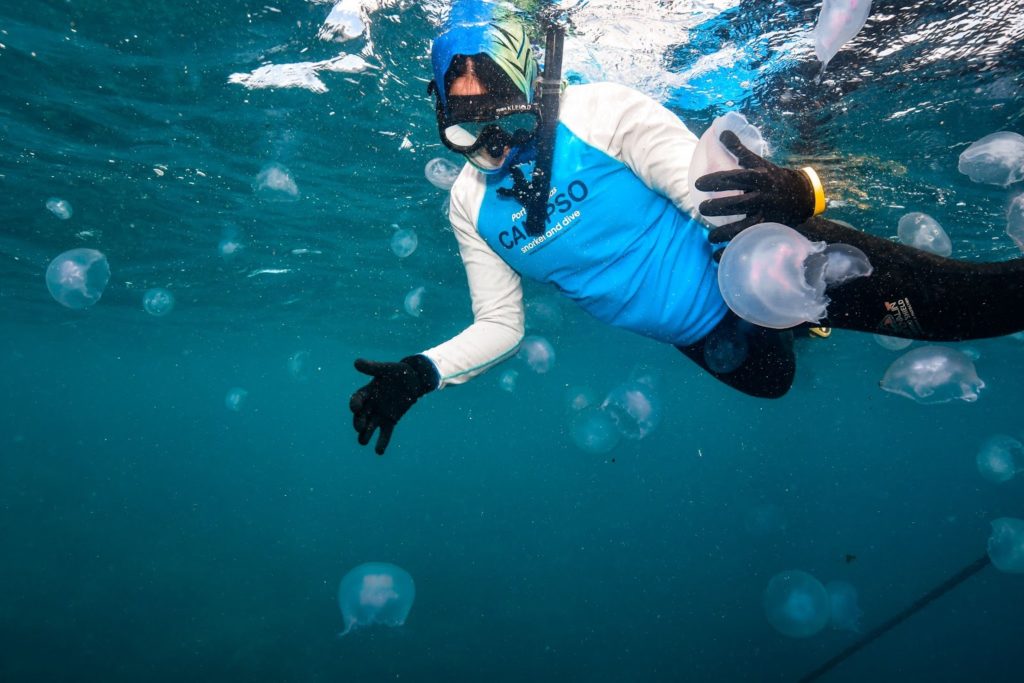

2. Swim In The Stinger Nets
In 1982, James Cook University innovated a safe swimming solution by introducing stinger nets to North Queensland beaches, allowing beachgoers to swim without the fear of box jellyfish stings. These nets serve as a physical barrier against Box Jellyfish and other large sea creatures during the stinger season, which runs from late October to May.
However, it’s crucial to understand that these nets are not foolproof. While they significantly reduce the risk of encountering Box Jellyfish, small or juvenile stingers can sometimes bypass the net by washing over or through the gaps. Particularly, Irukandji jellyfish, being much smaller, can pass through the net’s mesh. This is why many swimmers opt to wear stinger suits even within the netted areas for added protection.
Lifeguards conduct daily checks and regular patrols, performing stinger sweeps to ensure the nets and surrounding areas are as safe as possible. If jellyfish are detected, beaches may temporarily close until conditions improve and the jellyfish are no longer a threat near the shore.
At Four Mile Beach in Port Douglas, Surf Life Saving Queensland strongly advises swimming only within the designated areas marked by red and yellow flags. Box jellyfish often breed in creeks, and monsoon rains can wash them out to sea, underscoring the importance of these protective nets.
Harmless Jellyfish
Now that we’ve talked about the stinging jellyfish, let me introduce you to the moon jellyfish! Moon jellyfish are found throughout the world’s oceans. They are recognizable by the four circles visible through the translucent white bell. These jellyfish are purple in color, have short delicate tentacles, and are made up of 95% water. These jellyfish do not pose humans any harm. In fact, if you were to touch them the majority of the time they won’t sting. If they do happen to sting though it is a very light sting.
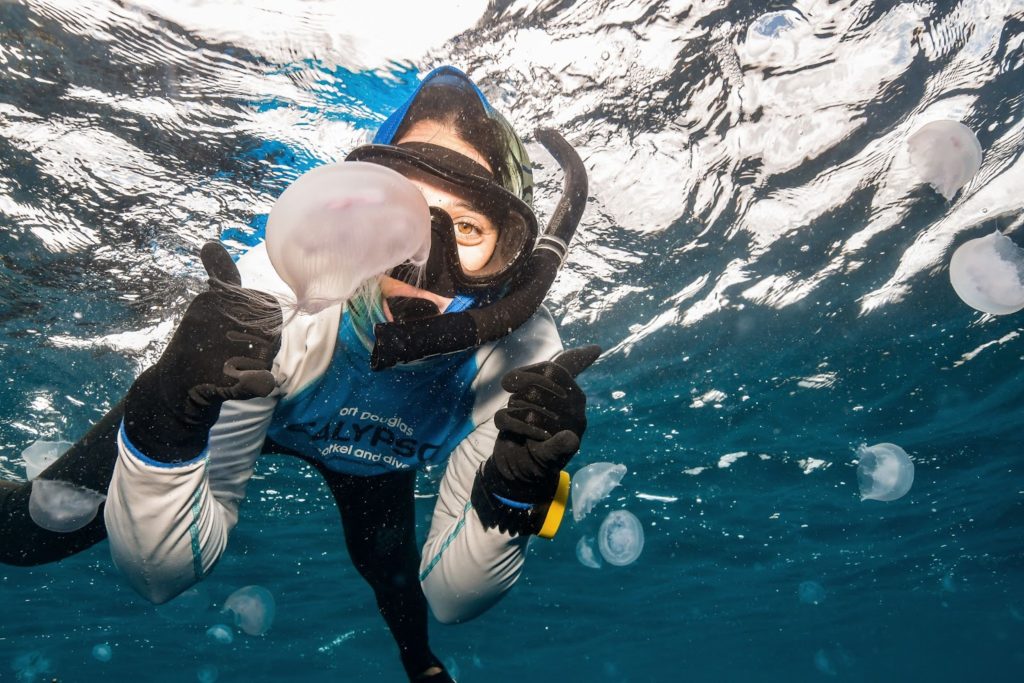
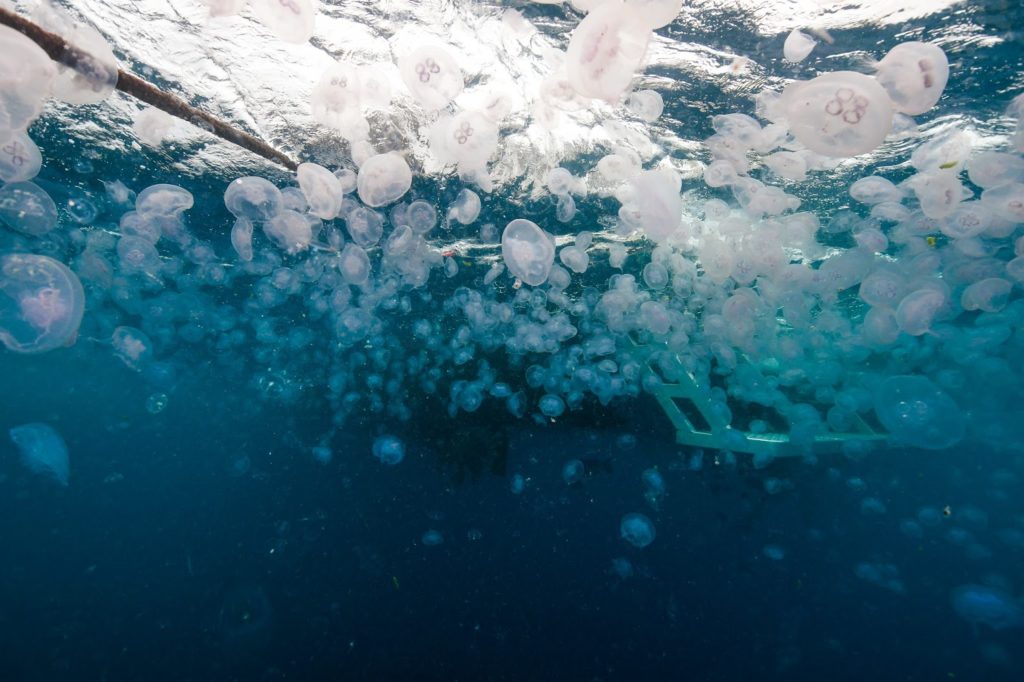

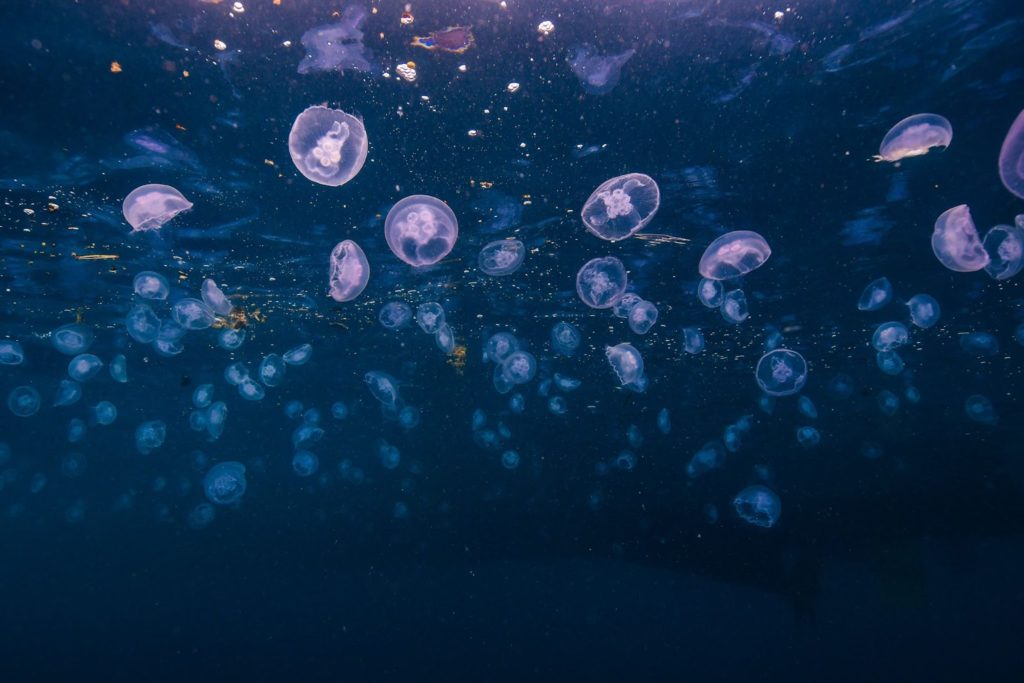
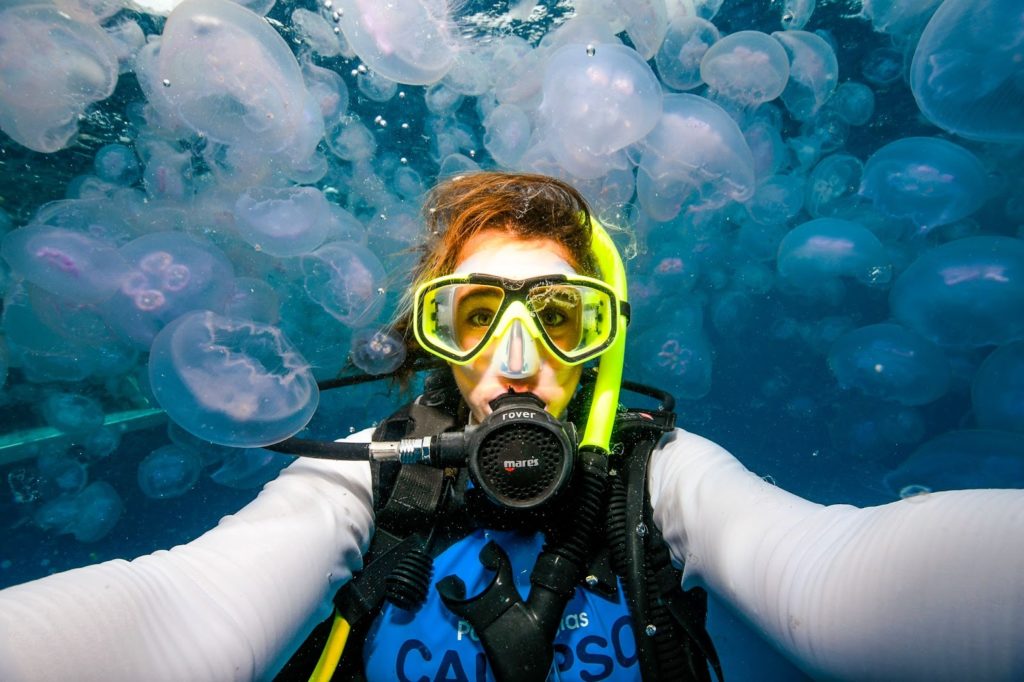
During the summer months out on the reef we can find an abundance of moon jellies. I’m talking in the hundreds! It can be quite fun to swim through a sea of them. It’s almost like swimming in outer space. The moon jellyfish also happen to be one of the favorite foods of turtles! You can find turtles munching away on the moon jelly’s every summer. It can make for some great photos & videos!
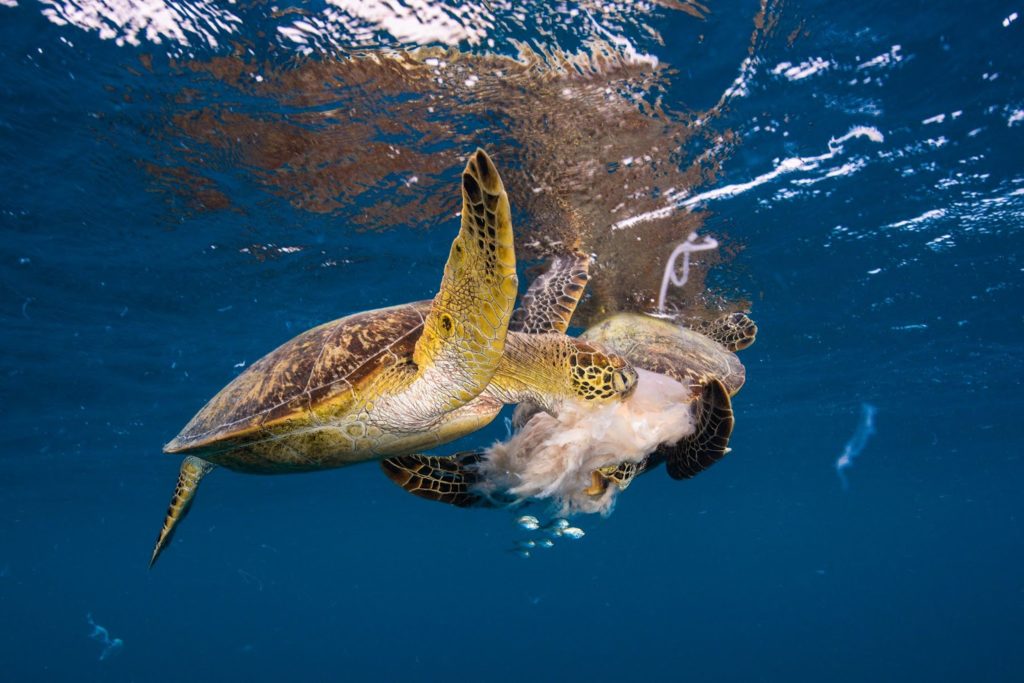
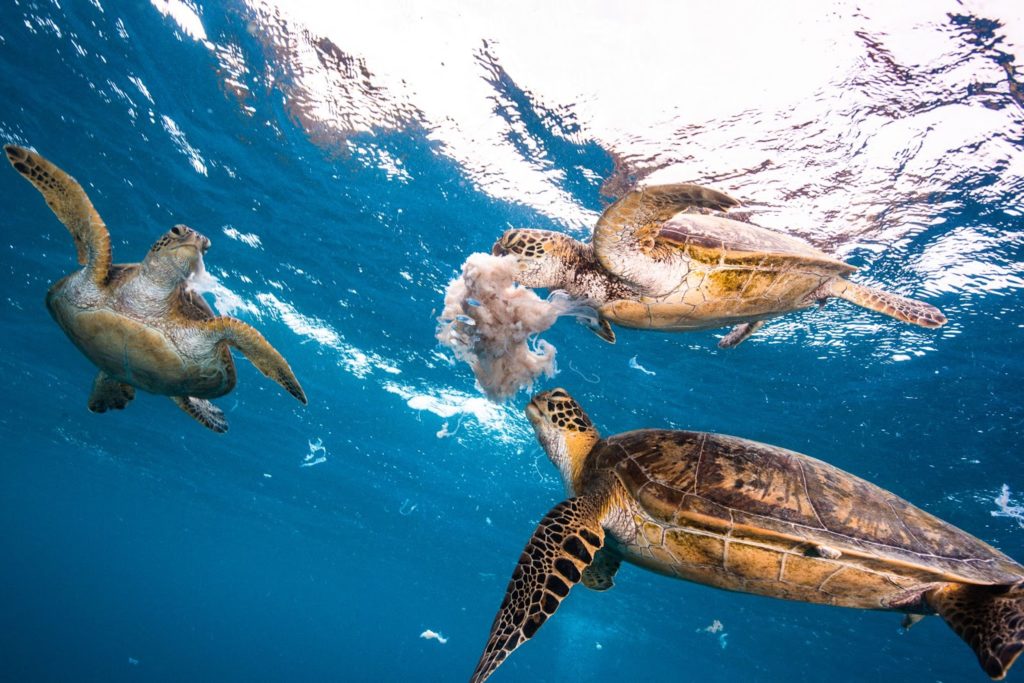
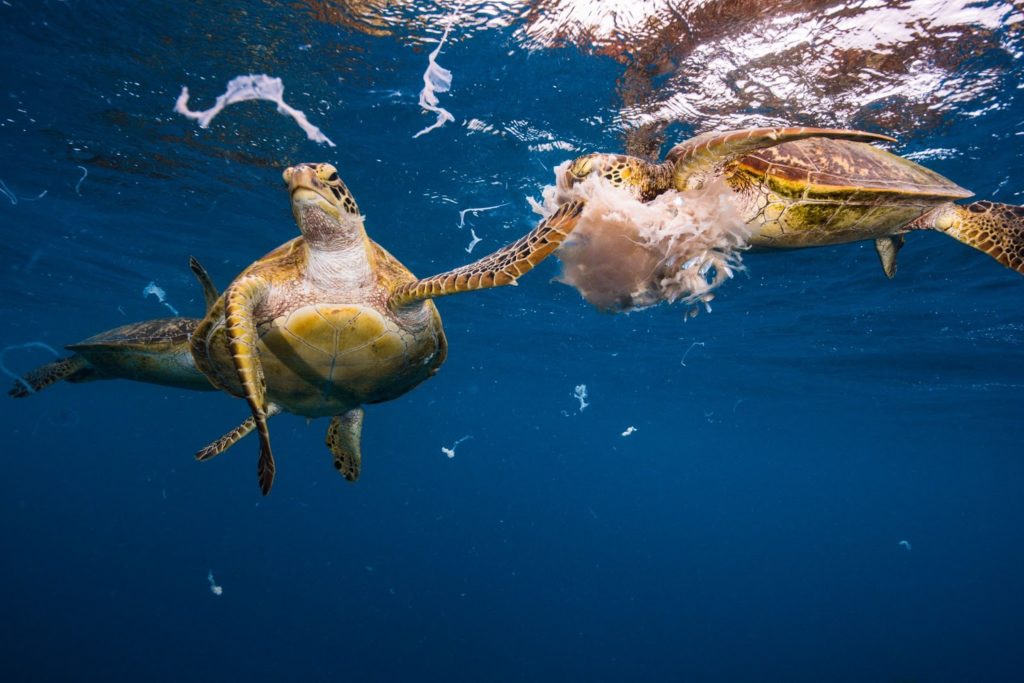
To Swim During Stinger Season Or Not?
Ultimately, the choice is yours. I believe that swimming during stinger season can be safe with the right precautions.
When you’re out on the reef, the likelihood of encountering a jellyfish sting is actually lower than at the beach since jellyfish tend to stay closer to the shoreline. Should you get stung while on a tour, rest assured that the crew is well-equipped to provide the necessary medical care, just like the lifesavers/lifeguards stationed at beaches. For those who’d rather steer clear of the sea during jellyfish season, Queensland’s far north offers numerous pristine freshwater swimming spots free of jellyfish. Plus, every hotel and resort has a swimming pool for a refreshing dip away from the ocean’s hazards.
I hope this information doesn’t deter you from enjoying the summer, which remains an incredible time to visit the reef. The calm days, when the wind is still and the water mirrors glass, are particularly magical. So, what’s your preference? Visiting the reef in the serene yet jellyfish-present summer, or experiencing the lively and windy winter with a chance to spot whales? Share your thoughts in the comments!
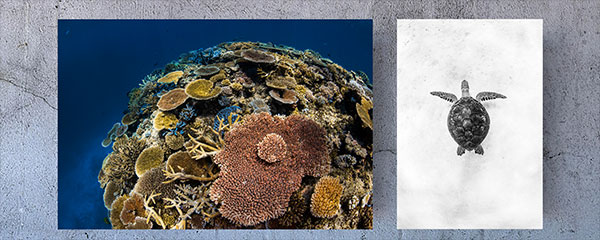
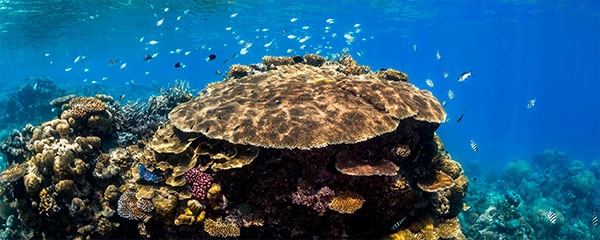
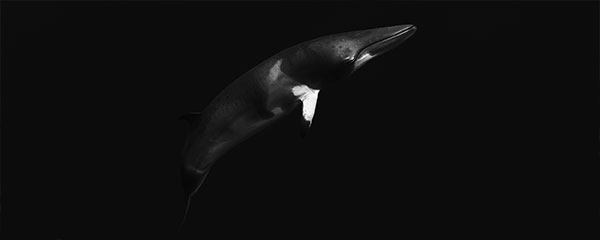
Where would you recommend to buy a quality suit? Generally speaking the type of store that has them. Anything particular that you would look for?
Hi Carlos! If you google stinger suits you will find lots of options! Look for one made from Lycra and has a hood and gloves. Adrenaline is a popular brand 🙂
I also really love the full-body rashguards from Plunge Waterwear. They don’t have a hood but they are very comfy and I wear a buff on my head to protect myself from the jellyfish. Check them out here – https://www.plungegear.com/